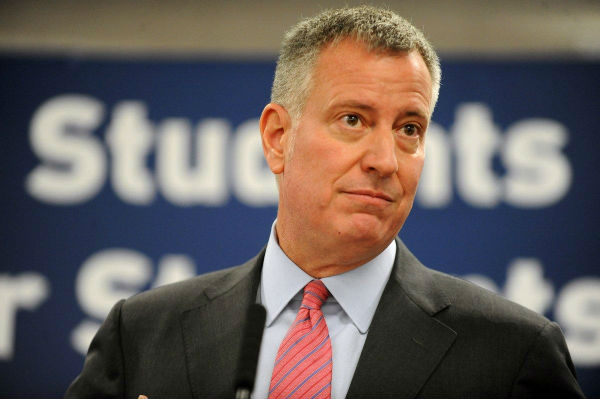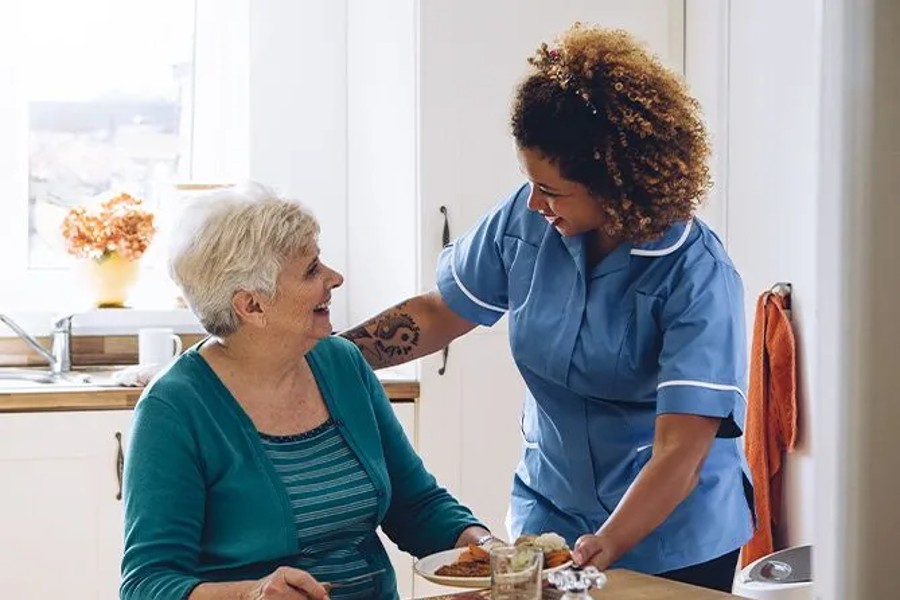 The Health Department today released its 2015 HIV Surveillance Annual Report, which shows that the annual number of new HIV diagnoses in New York City has fallen below 2,500 for the first time in the history of the epidemic.In addition, there were no HIV infections diagnosed among infants born in NYC in 2015 – a major achievement within the overall elimination of mother-to-child-transmission of HIV.
The Health Department today released its 2015 HIV Surveillance Annual Report, which shows that the annual number of new HIV diagnoses in New York City has fallen below 2,500 for the first time in the history of the epidemic.In addition, there were no HIV infections diagnosed among infants born in NYC in 2015 – a major achievement within the overall elimination of mother-to-child-transmission of HIV.
Black and Latino men who have sex with men (MSM) continue to account for a major proportion of new HIV diagnoses.
In 2015, 2,493 people were newly diagnosed with HIV in NYC, compared to 2,718 in 2014 and 5,902 in 2001, the highest recorded number of new HIV diagnoses since HIV case reporting began in New York State. While new diagnoses are down, communities of color continue to be disproportionally affected by HIV and AIDS – Black and Latino men who have sex with men (MSM) continue to account for a major proportion of new HIV diagnoses.
Additionally, this year’s HIV Surveillance Report features a dedicated section with data on HIV among transgender people and, for the first time, presents data by current gender instead of sex at birth and classifies transgender women as women and transgender men as men. New York City is the first jurisdiction to present HIV data in this way. The 2015 HIV Surveillance Annual Report is available at nyc.gov/health.
“We have yet again reached another historic low in new HIV diagnoses,” said Health Commissioner Dr. Mary T. Bassett. “We still have more work to do to reach our goal of ending the epidemic and reduce the disparities that persist. We must continue to work with advocates and the community to reach the New Yorkers who bear the highest burden of HIV and AIDS. I thank Mayor de Blasio for his continued commitment to reducing the number of new infections and investing in our efforts to end to the epidemic once and for all.”
In 2015, the de Blasio administration announced the NYC Plan to End the Epidemic, which included a $23 million investment in Fiscal Year 2017 to increase HIV prevention and health care programming that will benefit nearly 200,000 New Yorkers per year when fully implemented.
In 2015, the de Blasio administration announced the NYC Plan to End the Epidemic, which included a $23 million investment in Fiscal Year 2017 to increase HIV prevention and health care programming that will benefit nearly 200,000 New Yorkers per year when fully implemented. The plan aims to reduce the annual number of new HIV infections in New York City to no more than 600 by 2020, a level that would reduce HIV to below epidemic levels. As part of this plan, the Health Department announced an increase in City STD clinic hours and HIV and other sexual health services earlier this year as well as several other innovative programs supporting HIV prevention and care through partnerships with community providers.
“New York City continues to be a beacon of hope for the world as we see historic declines in HIV and the elimination of maternal-to-child transmission of HIV,” said Dr. Demetre Daskalakis, Assistant Commissioner for the Health Department’s Bureau of HIV/AIDS Prevention and Control. “The lessons that got us to the end of this important part of our epidemic are the lessons that will power us to our goal of extinguishing AIDS by 2020. Biomedical technology and community engagement merge into a single strategy to drive down this epidemic with love and respect for the communities overburdened by this infection. Together we will end the HIV divide caused by stigma and will see even faster progress to our goal of an AIDS-free generation.”
“In 2015, HIV diagnoses in New York City were at an all-time low,” said Public Advocate Letitia James. “Still, the epidemic continues to disproportionately affect LGBT, Black, Latino, and low-income New Yorkers. We must ensure equitable access to preventive care, treatment, and education in order to cultivate a healthier, destigmatized New York City.”
“Brooklyn has made truly meaningful strides in reducing the number of new HIV diagnoses; the 60 percent decline since 2001 represents the lives of hundreds of our neighbors who have been saved from this disease,” said Brooklyn Borough President Eric Adams. “We have far more to do in ending this epidemic once and for all, in particular focusing on communities of color and neighborhoods struck by poverty. I thank DOHMH Commissioner Bassett for advancing continued sexual health education and access to resources such as PEP and PrEP, critical tools in our fight against HIV/AIDS.”
“I applaud DOHMH on the significant role it has played in raising public awareness about how HIV is transmitted and other measures that have contributed to the reduction in HIV infection rates. At some point soon, it is my hope that HIV will be completely wiped out,” said Council Member Andrew Cohen, Chair of the City Council’s Mental Health Committee.
“Understanding the realities that increase the risk of HIV among both foreign-born and US-born Hispanic/Latino communities is critical for the development of effective prevention messages, HIV testing strategies and linkages to care, and for addressing stigma & discrimination. This understanding will result in a successful response to the HIV & AIDS epidemic in our diverse communities,” said Guillermo Chacon, President of the Latino Commission on AIDS & Founder of the Hispanic Health Network.
“New York City’s accelerating progress in reducing new HIV infections, as indicated by the 2015 new diagnoses data, encourages us to redouble our efforts to put together all the strategies and tools needed to reduce new infections to historically low levels by 2020,” said Mark Harrington, Executive Director of the Treatment Action Group (TAG). “These encouraging data show how much can be accomplished when the HIV-affected communities, the City, and the State are working side-by-side to end the epidemic. More work is needed to address continuing health disparities, especially the unacceptably high HIV incidence rates among transgender women and young gay men of color.”
“As we come together to commemorate those we’ve lost to AIDS on World AIDS Day later this week, it’s heartening to see how far we’ve truly come—both since the early, dark days of AIDS and also during the past two and half years since New York State launched its efforts to end the epidemic by the year 2020,” said Charles King, President and CEO of Housing Works. “I’m especially pleased that this report now presents HIV data by current gender, which will enable us to better target our efforts and link transgender New Yorkers, one of the populations that’s most at risk, to testing, care, treatment, and other essential services. Overall, the data updates demonstrate we’re making annual progress toward our goal of ending the epidemic across the State by 2020. And they also outline the work still to come to ensure that we reduce disparities, end HIV stigma, and finally end AIDS across all affected populations, for all New Yorkers.”
“During a time of great uncertainty for the fight against HIV and AIDS, it is especially encouraging to see New York City reach this historic milestone. We at GMHC also know the fight is not over and more work is needed to end AIDS as an epidemic by 2020,” said Kelsey Louie, CEO of GMHC. “The city’s continued response to this epidemic will be even more vital if changes are made to programs such as the Affordable Care Act, the Ryan White Care Program, and Medicare. We look forward to working with the city to improve HIV testing, treatment and prevention citywide in order to reach those most affected by this epidemic and we remain optimistic that we can and will reach our collective goal to end the epidemic once and for all.”
HIV/AIDS Surveillance Data
The Health Department’s 2015 Surveillance Report (most recent data available) includes graphs of trends in HIV diagnoses for key populations, maps displaying the geographic distribution of HIV in NYC, and measures of key outcomes such as linkage to care, viral suppression, and mortality among people with HIV. Overall, the report shows continued progress in reducing HIV diagnoses and deaths in NYC, in line with key goals of the State’s Ending the AIDS Epidemic initiative.
HIV and AIDS diagnoses, prevalence, and mortality continue to disproportionately affect certain populations. Care outcomes and survival rates also reveal marked disparities. In 2015, people newly diagnosed with HIV in NYC were predominantly male (81 percent), Black or Latino (78 percent), aged 20-39 (62 percent), people living in high-poverty areas (53 percent), or men who have sex with men (MSM) (58 percent). Among MSM, Black and Latino men comprised 71.5 percent of new HIV diagnoses. The proportion of people in HIV care who achieved viral suppression was lower among women, Blacks and Latinos, and younger people with HIV. Five-year survival following HIV diagnosis was lowest for Blacks, Asian/Pacific Islanders and those living in high-poverty areas.
NYC Plan to End the Epidemic
As part of the City’s End the Epidemic (EtE) plan, several initiatives are being launched to further drive down the number of new infections and prevent the spread of HIV:
· Increasing availability of post-exposure prophylaxis (PEP), a short course of treatment that, if taken within 72 hours of HIV exposure, can prevent infection
- Launch of a citywide 24-hour PEP hotline that provides free starter packs of PEP to exposed people without a doctor’s visit
- (Future) Launch of a full course (28 days) of PEP available at all City STD clinics
- (Future) Launch of PEP Centers of Excellence (COE): Designed to streamline delivery of PEP through five contracted agencies; COEs will provide immediate access to emergency PEP in addition to patient navigation and support services
· Implementing HIV prevention navigation for both HIV-positive and HIV-negative clients
- (Future) The PlaySure Network: interconnected prevention service providers that will engage HIV-negative people and deliver them to clinical sites with the following goals:
-Increase the number of HIV-negative people who are aware of their risk for HIV infection;
-Maintain the HIV-negative status of people who are at high risk of HIV acquisition through a variety of activities, including, but not limited to, PrEP and PEP; and
– Combine biological and behavioral HIV prevention into a more complete package of services to address the complexity of the risk of HIV acquisition.
New Yorkers should talk openly with their doctors about getting screened for HIV and about their sexual practices. For additional information about the City’s free STD clinics, please visit nyc.gov/stdclinic. You can also call 311 or text TESTNYC to 877877 to find a local testing site. To find a location that offers free NYC Condoms, call 311 or visit nyc.gov/condoms. To learn more about condom use and sexual health or to download the free NYC Condom Finder, please visit facebook.com/NYCcondom.
Become a Harlem Insider!
By submitting this form, you are consenting to receive marketing emails from: . You can revoke your consent to receive emails at any time by using the SafeUnsubscribe® link, found at the bottom of every email. Emails are serviced by Constant Contact








